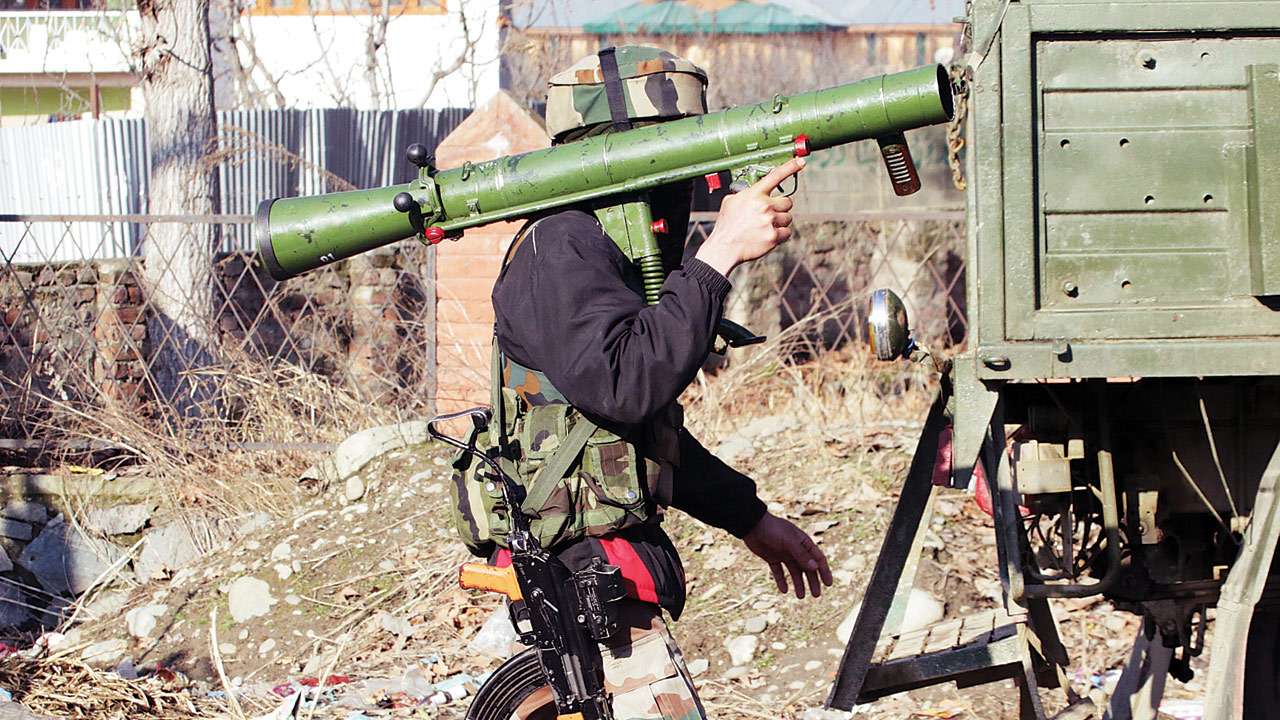
In one of deadliest terrorist attacks in 1995, akin to Pulwama last week, then Jammu and Kashmir Governor General (retd) K V Krishna Rao had a providential escape whilst supervising the Republic Day ceremony at the Maulana Azad Stadium in Jammu.
While security men bundled him in a nearby vehicle and sped away, the blast ripped out the limbs of J&K Information Department officials, flinging them in the air.
This incident has considerable significance and resemblance to Pulwama, not only in terms of its despicability, but the fact that it happened despite security agencies having voluminous prior intelligence. Yet, they failed to prevent it.
It so happened that on the night on January 25, 1995, Governor Rao had invited the then chiefs of intelligence agencies stationed in Jammu to prepare a plan for border infrastructure and development.
During his trip to Krishnaghati border areas, Rao was of the view that India’s border development and accessibility was no match to other side of the LoC.
While scribbling down suggestions in a scrapbook, Rao turned to then RAW Commissioner in Kashmir, CD Sahay, for suggestions. The RAW sleuth, in a pensive mood, apologised that he did not have many ideas on border development, but he could tell what was in store the next day (January 26) when the Governor would preside over the flag hoisting ceremony.
His predictions came true. A bomb literally exploded beneath Rao’s feet the next day. He escaped only because the handler had pressed the wrong buttons on the remote and had erred in the timing.
A bomb ripped through the stage, another one exploded near the gate and a third destroyed the parking lot. A combing operation was launched at Sahay’s behest, but the Japanese plastic timers remained undetected. The former Chief of Army Staff had apparently, refused to change the venue at the last minute.
Former intelligence sleuths recall that the information had been procured purely by accident. Sahay, before attending the meeting, asked his colleagues if there was something to discuss with the Governor.
“Nothing new sir, just routine,” they all replied. Sahay then asked for some recent files consigned to the record room, since his last meeting with Rao.
There were 13 files and to his horror, six of them had explicitly mentioned the impending attack on Republic Day in great detail.
Nobody had read the intelligence assessment sent by deep-penetration agents, nor had it been analysed or assessed. The files had been consigned to cupboards with his own signatures. The lone deviation from the plan was that unnerved militants had detonated the bomb in the parking lot first instead of the one beneath the stage.
Terror incidents, be it 26/11 in Mumbai or the recent Pulwama outrage, have repeatedly shown that there was never any dearth of intelligence.
Foot soldiers work overtime to generate intelligence. But there is glaring lack of structures in coordination and intelligence assessment.
In the Pulwama case, it is believed that just a week ago, intelligence was circulated to heads of paramilitary forces in Srinagar. The inputs warned of the use of improved explosive devises (IEDs) and officials were even told to treat the matter as most urgent.
In the aftermath of the Kargil war, the intelligence system was revamped and reformed. But the recent terror attack has once again shown that the system is by no means foolproof.
Intelligence czars will tell you that over the years with heavy reliance on technical intelligence like intercepting telephones, internet, e-mails and others, the most important aspect of intelligence gathering - human assets - are being overlooked.
It is said that the China desk at RAW has only a few hands to monitor mandarin-language intercepts or even newspapers.
Increasingly, language experts are urgently required on the Urdu, Dari and Pashtu desks.
Such is the focus on technical intelligence that Major General (retd) V K Singh disclosed a few years ago how Indian agencies had been mishandling the SEA-ME-WE submarine cable set up in 2000 connecting Western Europe, Middle East and South East Asia.
This cable is the main source of connectivity not just for telephones, but also for new technologies such as broadband services, Internet, video services and the ATM.
In its bid to emulate the CIA, the retired army officer says that RAW has been unnecessarily snooping on telephone traffic say between Germany and Japan and other countries.
But then with there is no one to assess such a huge volume of intelligence—which ultimately classifies it as a wastage of resources
Perhaps India is the only democracy where no oversight is exercised on its all-powerful intelligence services to make them accountable for omissions and commissions.
Successive governments and powerful political leaders are interested only in the IB for providing them with political intelligence and alerting them on the actions of adversaries.
Another factor that has damaged intelligence gathering is the drive to show quick results. It is standard practice to reach definite conclusions about a terror incident within a few hours, which has lead to booking of innocents or those with peripheral connections to the case.
Not only does it allow terrorists to have the last laugh, it also creates social tensions. Sometimes, they also short-circuit the process of dealing with terrorists.
But to allow an instrument of state to illegally arrogate such a key function invites trouble. Upholding the law and insisting that the police and intelligence does so most rigorously, should not be a matter of morality and legality, but the pragmatic means of combating terrorism.
Extra-judicial executions may work as a quick fix, but are a recipe for disaster in the long run. If you sow the wind, the saying goes, you will reap the whirlwind.
Author is Chief of National Bureau, DNA